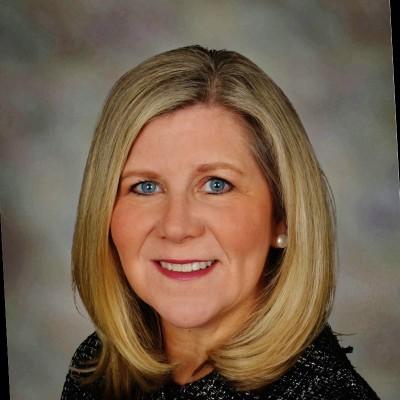General RMI Trends & Insights
What 4 Catastrophe Risk Trends are Shaping the Future of Risk Management and Insurance?
Disasters that used to be considered once-in-a-lifetime events are now happening every few years. In 2024 alone, U.S. natural catastrophes caused more than $112 billion in insured losses, according to the Insurance Information Institute. This escalating trend is challenging traditional catastrophe risk models and pushing insurers to rethink how they measure, model, and manage risk.
For learning and development (L&D) and talent management leaders, the growing frequency and severity of catastrophe risks also highlight an urgent need: helping those in risk management and insurance evolve their skills so they can recognize and address a wide range of threats. By understanding key catastrophe risk trends, you can position your organization to not only withstand the next global catastrophic risk but lead with confidence through it.
Let’s explore four key trends shaping how today’s leaders can adapt through data, technology, and education.
Trend 1: Increasing Frequency and Severity of Catastrophes
Across the globe, hurricanes, floods, wildfires, and other natural disasters are striking more often and with greater intensity. In the first half of 2025, global insured losses from natural catastrophes reached approximately $80 billion, nearly double the 10-year average from 2014-2024, according to a report from Swiss Re Institute. Total losses for the full year could reach $150 billion or more.
And it’s not only natural catastrophes. Human-caused catastrophes, like cyber incidents and geopolitical conflicts, are also growing more complex. They’re forcing organizations to expand their corporate risk management strategy by exploring lesser-known geopolitical, industrial, and mass violence risks. In fact, EY’s 2025 Global Insurance Outlook found that 98% of global insurance CEOs plan to alter investments due to geopolitical factors.
Simply put, each major catastrophe can affect underwriting margins, pressure reinsurance capacity, and increase the likelihood that insurance carriers will retreat from high-risk regions. Catastrophe risk assessment and management must be an ongoing priority.
Trend 2: Advanced Analytics, AI, and Next-Gen Modeling
Traditional catastrophe risk models can’t keep up with today’s evolving threats, so risk management and insurance professionals are using advanced technology to make smarter decisions:
- AI-driven pattern detection helps find patterns in weather and exposure data so companies can take action sooner
- Dynamic modeling improves pricing and reserving accuracy, even when data is uncertain
- Geospatial analytics (GIS) helps visualize risks and vulnerabilities down to the neighborhood level
To illustrate, the Predict & Prevent® podcast—which addresses some of the biggest risk challenges facing society today— recently released an episode that explores how Faura's technology identifies which homes are more likely to survive wildfires, hurricanes, floods, earthquakes, and hail. Using quick homeowner self-assessments, Faura helps insurers replace costly inspections. Emerging technologies like these are critical to staying ahead of catastrophe risk.
Trend 3: Innovations in Risk Transfer and Capital Markets
As global catastrophic risks grow, insurers are finding new ways to share financial exposure. Traditionally, insurers relied on reinsurance when losses were too high. However, insurers are more often turning to alternative capital sources, including catastrophe bonds and insurance-linked securities (ILS), which connect financial markets directly to disaster events.
Parametric insurance is also more widely available than ever. Instead of waiting for a traditional loss assessment, payouts are triggered automatically when certain conditions—like wind speed or rainfall—reach a set level. This speeds up recovery and stabilizes finances after a major event.
Ultimately, this means that catastrophe risk has become a financial system challenge, not just an actuarial one. Understanding how insurance and capital markets work together will be key for staying resilient in the years ahead.
Trend 4: Catastrophe Resilience, Mitigation, and Proactive Planning
Forward-thinking RMI leaders are focusing more on proactive risk mitigation. Many companies now reward policyholders who take steps to reduce their risks by reinforcing buildings, installing advanced fire protection systems, and more. They may even provide policyholders with preventative technology up front, like sensors to monitor electrical issues or mitigate water damage from burst pipes or sprinklers. Likewise, organizations are also embracing scenario-based planning, using simulations to test their readiness for different disaster situations.
This shift is also impacting organizational culture. A resilient organization today ensures that every employee is well equipped for disaster readiness. L&D leaders play a crucial role by helping staff build the knowledge and confidence to respond effectively when catastrophe risk becomes reality.
The Key Takeaway: Education is the Bridge
The bottom line is that in the wake of growing global catastrophic risk, education and upskilling aren’t optional; they’re essential to close resilience and talent gaps. The Institutes Designations’ new Associate in Catastrophe Risk and Resiliency™ (ACRR™) helps RMI professionals meet this challenge and gain in-demand skills to manage natural and human-caused catastrophe risk.
Plus, ACRR is backed by The Institutes’ more than 115 years of experience as a not-for-profit, committed to educating, elevating, and connecting those interested in risk management and insurance to create a more informed, resilient world.
Empower your team to turn catastrophe risk into readiness with ACRR, the first of its kind that addresses catastrophes specifically within the RMI context.

About the Author
Diane Hanlon is Head of Sales and Market Development at The Institutes, where she leads sales strategy and client partnerships. She works with Learning and Development leaders to design workforce learning pathways and serves on the Board of the Society of Insurance Trainers and Educators.

